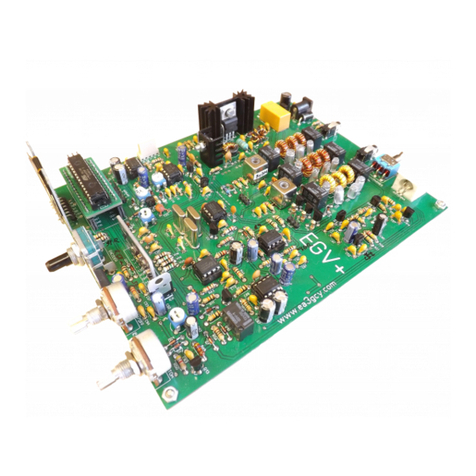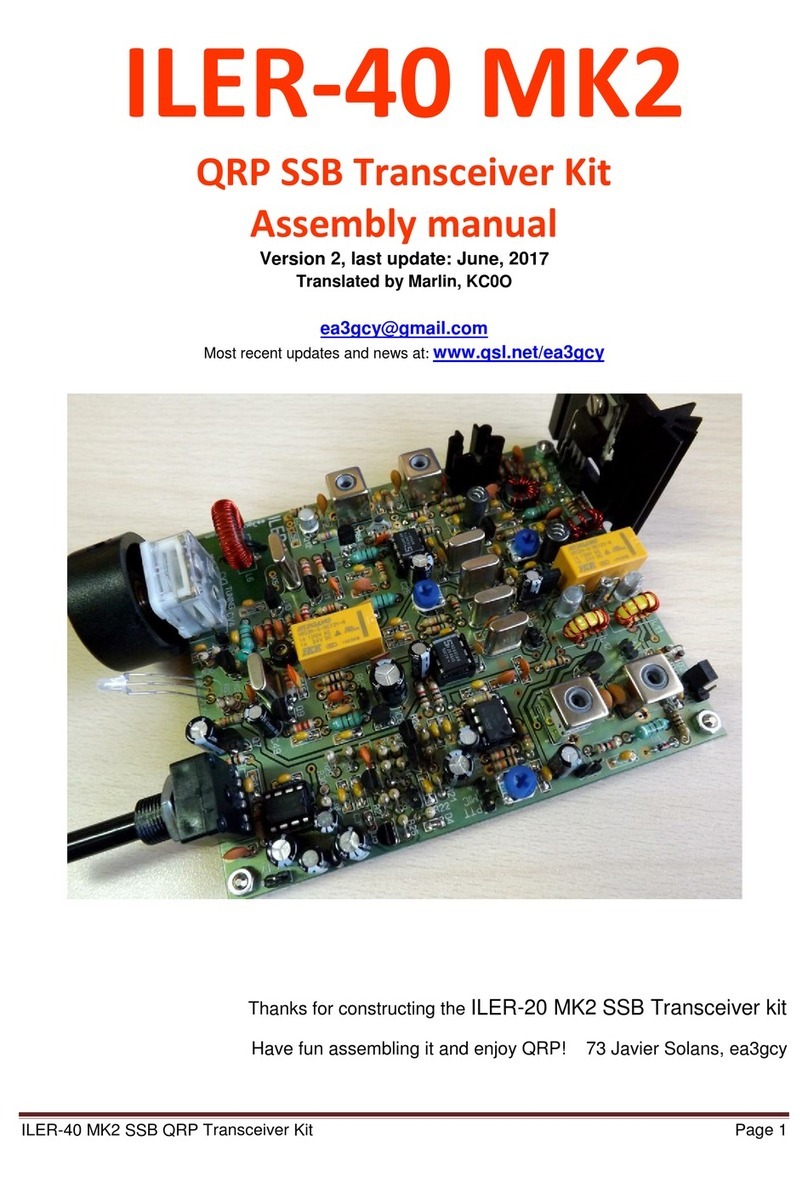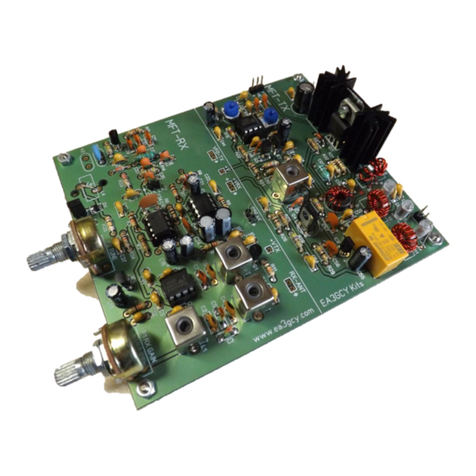
DB4020 SSB Transceiver OPERATINGMANUAL
MAIN MENU
To enter the main menu, you must push and hold the encoder pushbutton for >1 second. Then, you can
move through the menu lines by turning the encoder. The last line is "EXIT" to exit without change.
Band change:
To change the band, go to main menu and select the line “40M BAND” or “20M BAND” and a short press
on switch encoder.
Step range change:
There are two ranges of steps. The default range is “1kHz - 100Hz - 10Hz”To change to the second
range of steps, go to main menu and select the line "1MHz 100kHz 10kHz" and push switch encoder
again. To return to the previous range, repeat the same operation.
RIT on/off:
To activate the RIT, select the "RIT ON / OFF" line and press the encoder switch. Then, “RIT ON”will
appear on the main screen. If the frequency increases, "RX+" will appear or if it decreases, "RX-" will
appear. If the frequency does not change, "RX=" will appear.
When transmitting, the frequency will always return to the initial one.
To deactivate the RIT, proceed as in activation.
SETTINGS:
Select this line, press push-button to enter the “SETTINGS” menu.
EXIT:
Return to the main tuning screen.































